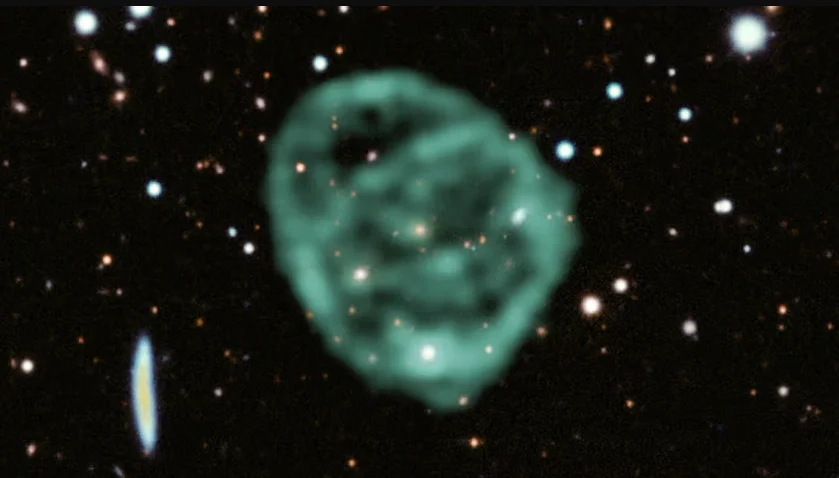Mystery of strange circles in space solved
- January 9, 2024
- 0
It’s not often that space throws something completely new at you, but that’s exactly what happened in 2019 when astronomers discovered a completely unknown phenomenon they called Odd
It’s not often that space throws something completely new at you, but that’s exactly what happened in 2019 when astronomers discovered a completely unknown phenomenon they called Odd

It’s not often that space throws something completely new at you, but that’s exactly what happened in 2019 when astronomers discovered a completely unknown phenomenon they called Odd Radio Circles (ORCs). Now more data may have revealed how these rare objects were formed.
All you need to know about ORCs is in the name: they’re circular blobs of radio emission, and they’re weird because it’s not exactly known what causes them. The first few were discovered using data from the Australian Square Kilometer Array Pathfinder (ASKAP) radio telescope, and at first it was not clear whether they were small and within our galaxy or huge and much further away.
Being so weak and invisible to infrared and optical wavelengths, ORCs have been difficult to study, but more information has emerged in 2022 to help identify them. The second scenario turned out to be true; ORCs are very large, spanning millions of light-years, and concentrated in specific galaxies. And it turns out this may be the key to understanding them. In a new study, astronomers have found an almost literal smoking gun by connecting ORCs to starburst galaxies.
“These galaxies are really interesting,” said Alison Coyle, lead author of the study. “They occur when two massive galaxies collide. The merger pushes all the gas into a very small area, causing an intense burst of star formation. Massive stars burn rapidly and expel their gas as wind when they die.”
The birth of stars is, of course, associated with the death of stars, so after some time these galaxies are subject to a large number of simultaneous supernovae. When many stars explode simultaneously in close proximity, the gas they spew is accelerated into winds that leave the galaxy at speeds of up to 2,000 km (1,240 miles) per second. The team suspected that ORCs might be a late stage in this process.
To find out, they examined the galaxy at the center of an ORC in optical and infrared light. And indeed there appeared to be an enormous amount of bright, hot, compressed gas at the center. From the data, they determined that the stars in this galaxy are about 6 billion years old and that the period of crazy starfall ended about a billion years ago.
The team then ran simulations taking into account the properties of the galaxy, its stars, and the ORC surrounding it. They showed that primitive winds blew for about 200 million years and then stopped. The shock wave then passed through, pushing the hot gas further out, creating a radio ring, while another shock wave propagated in the opposite direction, pushing the cooler gas back into the galaxy. The entire process took about 750 million years, which the researchers say matches their original estimate of the structure’s age.

“You need a high flow rate for it to work, which means it pushes out a lot of material very quickly,” Coyle said. “And the density of the surrounding gas outside the galaxy must be low, otherwise the shock would stop. These are two key factors. The galaxies we studied turned out to have very high rates of mass flux. They are rare, but they do exist. I think this really indicates that ORCs come from some kind of galactic wind.” .”
These radio circles aren’t so weird anymore. But the team says there’s still a lot to learn about them, and they could tell us about galaxies as a whole.
“They may also help us learn more about galaxy evolution: Do all large galaxies go through an ORC phase?” said Coyle. “Do spiral galaxies become elliptical when they no longer form stars? “I think we can learn a lot about ORC and learn from ORC.”
In the meantime, we eagerly await the next space puzzle to emerge from deep space. The study was published in the journal Nature.
Source: Port Altele
As an experienced journalist and author, Mary has been reporting on the latest news and trends for over 5 years. With a passion for uncovering the stories behind the headlines, Mary has earned a reputation as a trusted voice in the world of journalism. Her writing style is insightful, engaging and thought-provoking, as she takes a deep dive into the most pressing issues of our time.